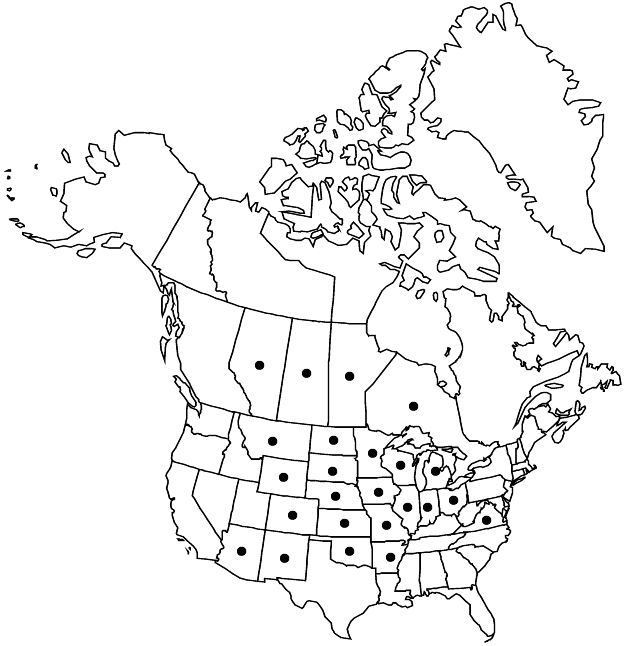Difference between revisions of "Viola pedatifida"
Gen. Hist. 1: 320. 1831.
imported>Volume Importer |
imported>Volume Importer |
||
| Line 60: | Line 60: | ||
|publication year=1831 | |publication year=1831 | ||
|special status=Endemic | |special status=Endemic | ||
| − | |source xml=https:// | + | |source xml=https://bitbucket.org/aafc-mbb/fna-data-curation/src/2e0870ddd59836b60bcf96646a41e87ea5a5943a/coarse_grained_fna_xml/V6/V6_250.xml |
|genus=Viola | |genus=Viola | ||
|species=Viola pedatifida | |species=Viola pedatifida | ||
Latest revision as of 22:20, 5 November 2020
Plants perennial, acaulescent, not stoloniferous, 5–30 cm; rhizome thick, fleshy. Leaves basal, 2–11, ascending to erect, 5–9-lobed; stipules linear-lanceolate, margins entire, apex acute; petiole 3–16 cm, pubescent; blade similar in width and shape, lobes lanceolate, spatulate, falcate, or linear, 1–7 × 2–8 cm, base truncate to reniform, margins entire, ciliate, apex acute to obtuse, mucronulate, surfaces pubescent, hairs sometimes concentrated on veins. Peduncles 5–18 cm, glabrous or pubescent. Flowers: sepals lanceolate to ovate, margins ciliate or eciliate, auricles 1–2 mm; petals light to soft reddish violet on both surfaces, lower 3 white basally, dark violet-veined, lateral 2 and lowest usually bearded, lowest 10–25 mm, spur same color as petals, gibbous, 2–3 mm; style head beardless; cleistogamous flowers on ascending to erect peduncles. Capsules ellipsoid, 10–15 mm, glabrous. Seeds beige, mottled to bronze, 1.5–2.5 mm. 2n = 54.
Phenology: Flowering Mar–Jun.
Habitat: Prairies, grasslands, disturbed ground, dry gravelly hills
Elevation: 500–1000 m
Distribution

Alta., Man., Ont., Sask., Ariz., Ark., Colo., Ill., Ind., Iowa, Kans., Mich., Minn., Mo., Mont., Nebr., N.Mex., N.Dak., Ohio, Okla., S.Dak., Va., Wis., Wyo.
Discussion
Viola pedatifida was reported historically from, and recently rediscovered in, the Appalachian shale barrens of Virginia (T. Wieboldt, pers. comm.).
Viola pedatifida reportedly hybridizes with V. sororia (= V. ×bernardii Greene).
Selected References
None.